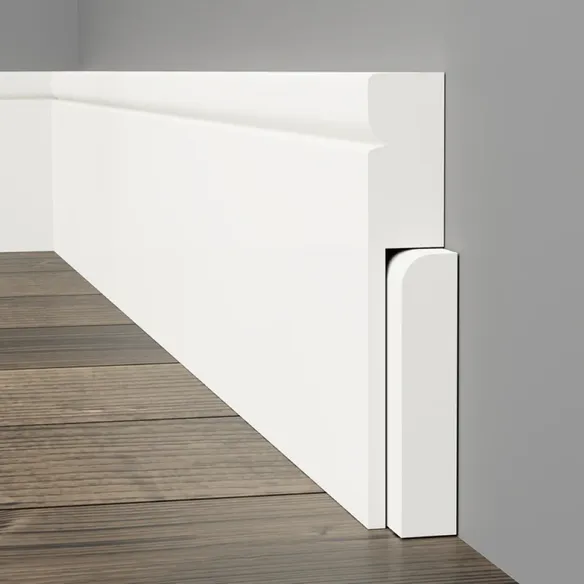Selecting and installing wall panelling can transform ordinary rooms into spaces with character and depth. With the variety of kits available, making the right choice and ensuring a successful installation requires careful planning and execution. This guide walks you through the entire process, from selection to final touches, ensuring your panelling project enhances your home beautifully and effectively.
Choosing the Right Panelling Kit
1. Assess Your Space and Needs
Begin by evaluating the room where you plan to install the pre cut panelling. Consider the following:
-
Room Function: Is it a high-moisture area like a bathroom or kitchen, or a dry living space?
-
Wall Condition: Are your walls smooth, or do they have imperfections that need addressing?
-
Style Goals: Do you prefer a traditional, modern, or rustic look?
-
Ceiling Height and Room Size: Taller rooms can handle more substantial profiles, while smaller spaces may benefit from simpler designs.
2. Understand Material Options
Panelling kits come in various materials, each with unique benefits:
-
MDF (Medium-Density Fiberboard): Affordable, smooth, and ideal for painted finishes. Best for dry areas.
-
PVC/Vinyl: Moisture-resistant and durable, perfect for bathrooms and kitchens.
-
Polyurethane: Lightweight and great for intricate designs. Resistant to moisture and insects.
-
Wood: Authentic and durable but often more expensive and requiring more finishing work.
3. Match the Style to Your Home’s Aesthetic
-
Traditional Styles: Raised panels, picture frame moulding, or wainscoting for classic elegance.
-
Modern Styles: Sleek slat walls, geometric patterns, or minimalist grids for contemporary spaces.
-
Transitional Styles: Simple shaker-style panels or beadboard that blend traditional and modern elements.
4. Set a Realistic Budget
Factor in the cost of the kit, adhesive, finishing supplies (primer, paint, caulk), and tools. MDF kits are typically the most budget-friendly, while wood and polyurethane options may cost more.
5. Check Kit Quality and Reviews
Look for kits with:
-
Precision-cut pieces for seamless installation.
-
Clear instructions and included adhesives or fasteners.
-
Positive customer reviews regarding durability and ease of installation.
Installing Your Panelling Kit
Tools and Materials You’ll Need
-
Panelling kit
-
Measuring tape, level, and pencil
-
Construction adhesive and caulk gun
-
Fine-toothed saw (e.g., miter or handsaw)
-
Sandpaper, wood filler, and paintable caulk
-
Primer and paint
-
Optional: Nail gun for added security
Step-by-Step Installation Guide
-
Prepare the Wall
-
Clear the room and remove outlet covers or wall hangings.
-
Clean the wall thoroughly to ensure proper adhesion.
-
Repair any significant cracks or holes. For heavily textured walls, consider sanding them smooth.
-
-
Plan and Mark the Layout
-
Use a level and pencil to mark reference lines for your panels. For grid patterns, ensure the layout is symmetrical.
-
Dry-fit panels to confirm spacing and alignment before applying adhesive.
-
-
Cut Panels to Size
-
Measure twice and cut once. Use a fine-toothed saw for clean edges.
-
For electrical outlets or switches, mark and cut precise openings in the panels.
-
-
Apply Adhesive and Install Panels
-
Follow the kit instructions to apply construction adhesive to the back of each panel in a zigzag pattern.
-
Press the panels firmly onto the wall, aligning them with your layout marks.
-
Use a level to check for straightness and painter’s tape to hold panels in place while the adhesive sets.
-
For extra security, use finishing nails at an angle (countersink the heads).
-
-
Finishing Touches
-
Fill nail holes and gaps with wood filler. Sand smooth once dry.
-
Apply paintable caulk along the edges where the panels meet the wall or ceiling for a seamless look.
-
Prime the panels (especially if using MDF) to prevent uneven paint absorption.
-
Paint with a brush for detailed areas and a roller for flat surfaces. Use a durable satin or semi-gloss finish for easy cleaning.
-
Pro Tips for Success
-
Work Methodically: Install panels one section at a time, double-checking alignment as you go.
-
Lighting Matters: Install panels in a well-lit area to spot imperfections early.
-
Patience Pays: Allow adequate drying time for adhesive, caulk, and paint between steps.
-
Experiment with Color: Paint panels and walls the same color for subtle texture, or use contrasting colors for bold statements.
Troubleshooting Common Issues
-
Gaps at Corners: Use caulk to fill small gaps. For larger gaps, add trim pieces.
-
Adhesive Not Holding: Ensure walls are clean and dry. Use a nail gun for additional support if needed.
-
Uneven Walls: Shim behind panels with thin pieces of wood or use flexible caulk to bridge gaps.
Final Thoughts
Choosing and installing the right panelling kit is a rewarding DIY project that adds timeless elegance to your home. By selecting a kit that suits your space, style, and budget, and following careful installation steps, you can achieve a professional-looking transformation. Whether you’re creating a classic wainscoted hallway or a modern slat wall in your living room, the result will be a space that feels curated, sophisticated, and uniquely yours.
